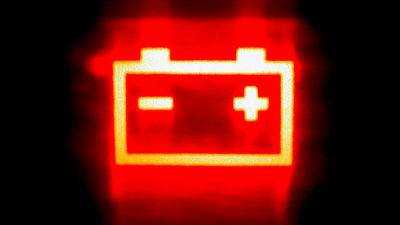Electronic artificial skin (E-skin) that is thinner than the skin and super-flexible substrate & LED is attached and stickily attached to the skin will be developed

The thinness is only 3 micrometers, thinner than human skin, organic LED which is flexible and can be affixed to human skin, research group of Professor Tsuyoshi Aya and instructor Tomoyuki Yokota of the University of Tokyo graduate school of engineering have announced.
Ultraflexible organic photonic skin | Science Advances
http://advances.sciencemag.org/content/2/4/e1501856
Super-thin electronic skin lights up a digital display on your hand | The Verge
http://www.theverge.com/2016/4/15/11437664/university-of-tokyo-flexible-electronic-skin-digital-display
Cover your body in light with "organic photonic skin" | Ars Technica
http://arstechnica.com/information-technology/2016/04/cover-your-body-in-light-with-organic-photonic-skin/
I can understand exactly what E-skin this time is announced by seeing the following movie.
Electronic skin - YouTube
In the movie, the back of the hand with sticker stickers appeared.
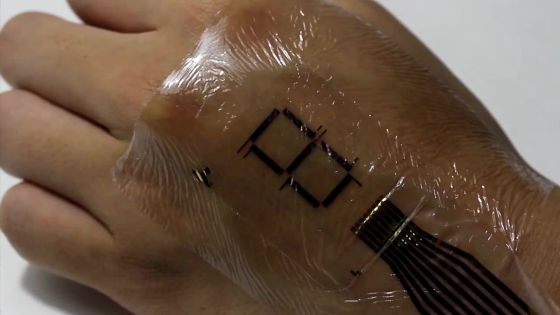
This began to turn on with chicchas ... ...

As the skin becomes a display, numbers such as 2, 8, and 6 are displayed one after another.
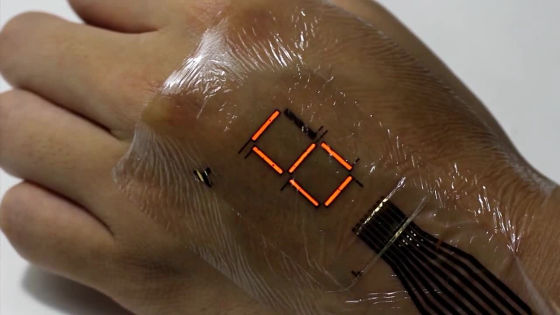
The Laboratory Laboratory announced that it is a very thin and flexible electronic artificial skin (E-skin). Plastic sheets with substrates and LEDs can be attached perfectly to the skin, the LEDs are automatically charged with sunlight and lit as LED lights in various places such as red, blue and green in dark places can do.
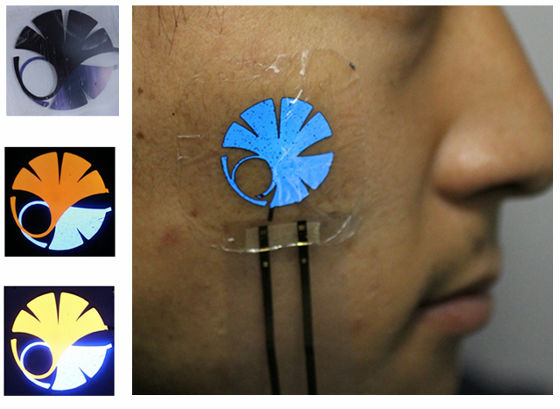
The seat with the LED light is crumpled like a jewel without problems with function even if it rolls.
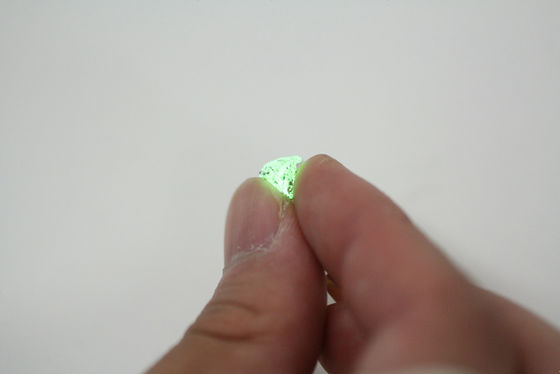
In addition, the seat can measure blood oxygen concentration and heart rate, and it is also possible to blink the LED in a form linked with the measured value.
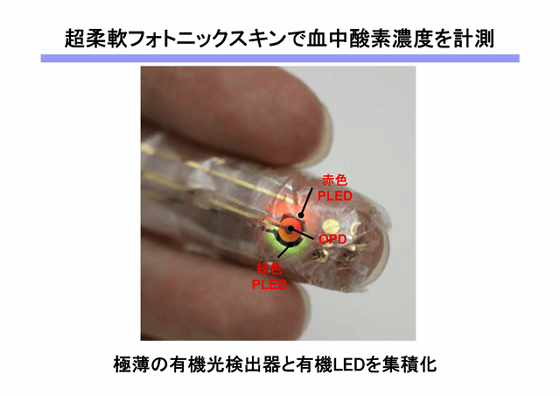
The structure looks like this, the sealing film · cathode · light emitting layer · intermediate layer · hole injection layer · transparent electrode · substrate is overlapped.
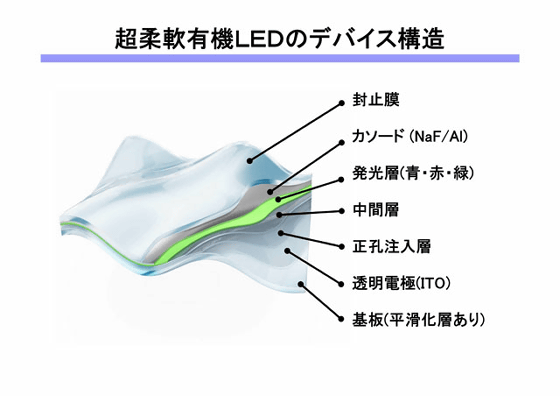
Professor Shiya developed an ultra-thin organic LED in 2013, but until now it has been found that the brightness and the external quantum efficiency were not enough due to research results under nitrogen environment. On the other hand, E-skin developed this time succeeded in making stable operation in the atmosphere while maintaining high flexibility by forming a protective film with low oxygen permeability on the polymer substrate . It is also characterized as having less heat release and less power consumption.
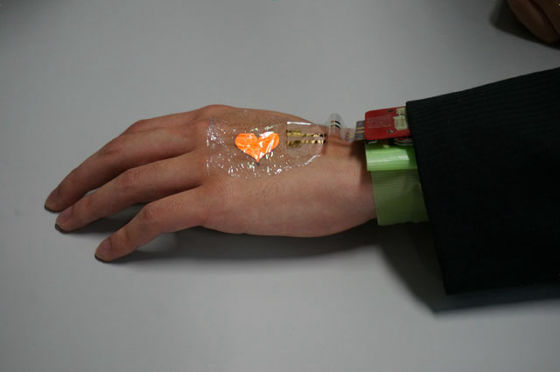
The E-skin so far had the problem that it can not light the LED for only a few hours at the longest in the air, but since the one developed this time does not transmit moisture or oxygen, it is over several days I can maintain the LED lighting. This E-skin not only measures the state of the body of the user like a wearable terminal, it is expected to be used for various uses such as a fashion item such as a tattoo.
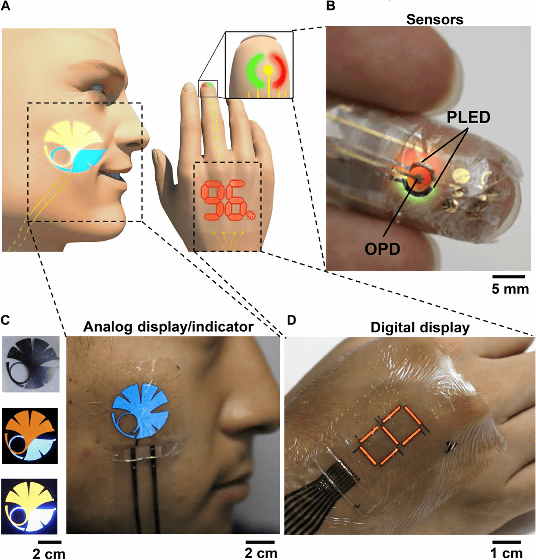
In the past, Dexy Lab has published the world's thinnest soft electronic circuit, organic solar cell, etc. The results of the research can be seen from the following website.
Doya Laboratory Organic Transistor Lab Someya Group Organic Transistor lab
http://www.ntech.t.u-tokyo.ac.jp/

Related Posts:






